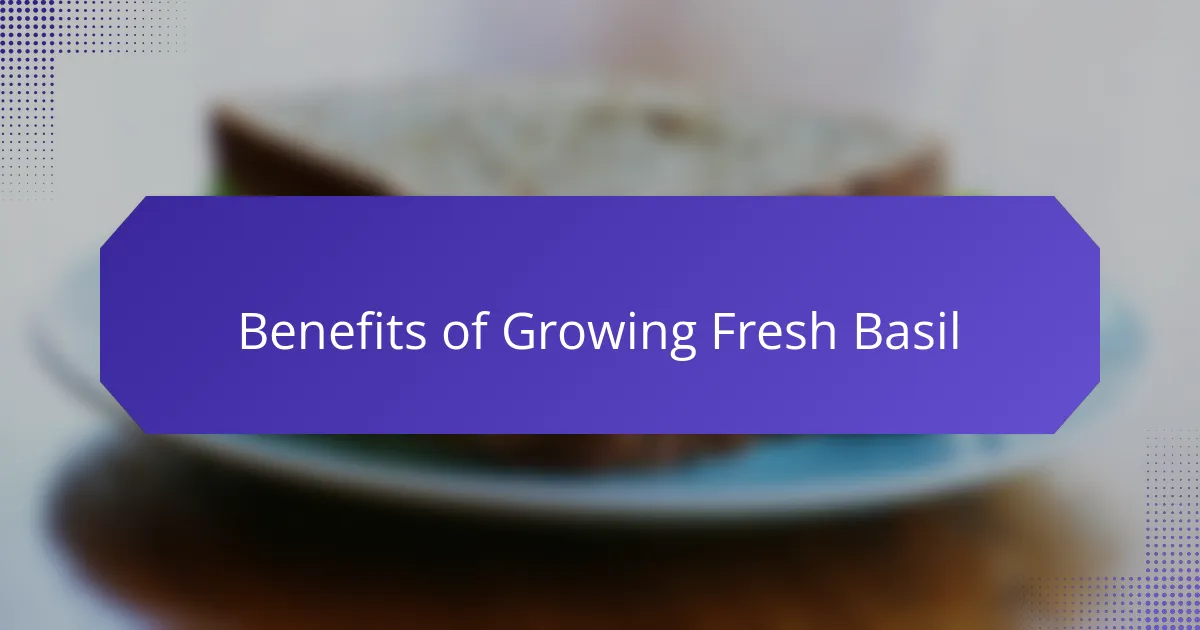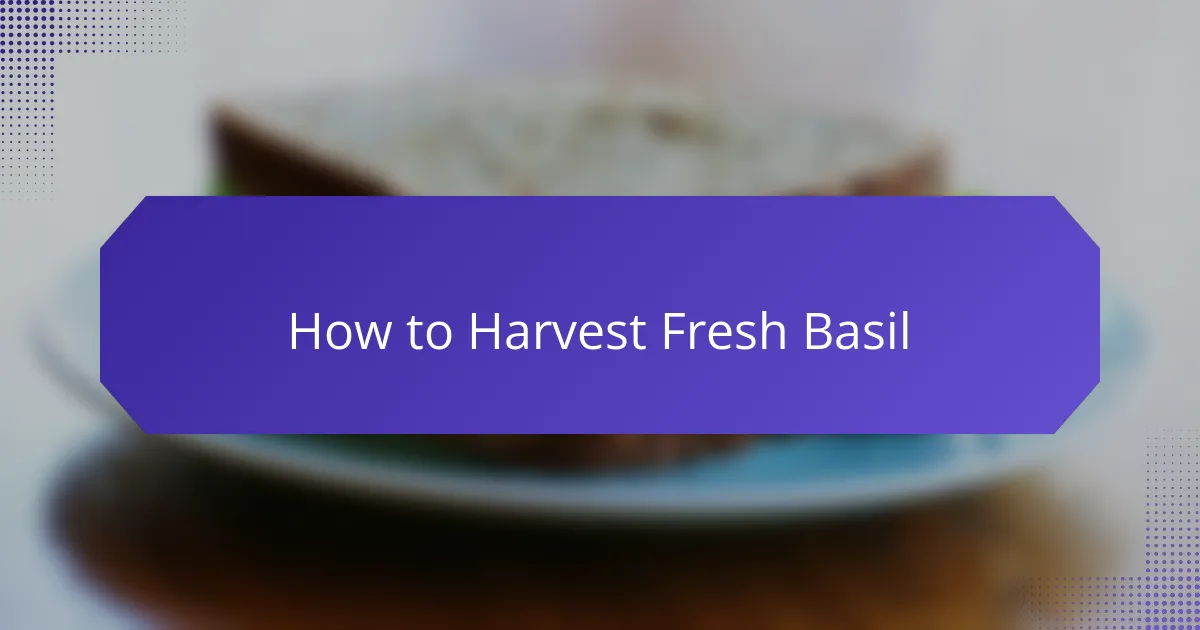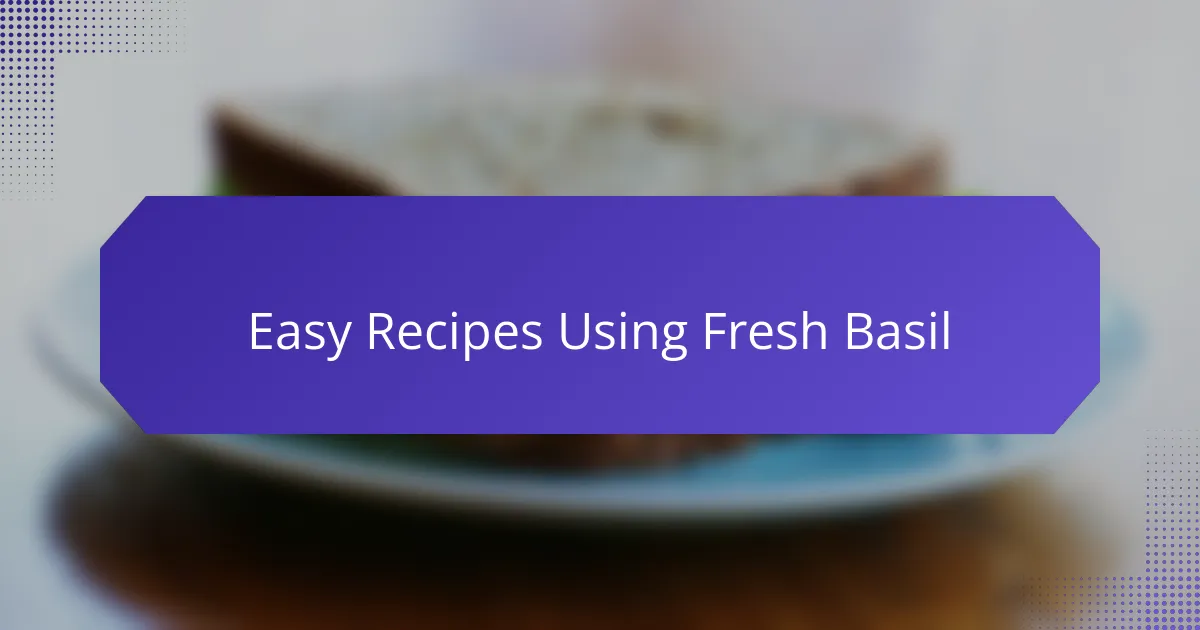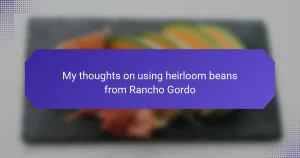Key takeaways
- Cooking challenges enhance culinary skills and creativity, allowing exploration of new flavors using ingredients like fresh basil.
- Growing fresh basil offers cost savings, a rewarding gardening experience, and a connection to cooking.
- Harvesting basil encourages plant growth and involves timing for maximum freshness, such as doing it in the morning.
- Fresh basil is versatile in recipes and best added just before serving to preserve its flavor; it pairs well with complementary ingredients.

Overview of Cooking Challenges
Cooking challenges can be a delightful way to push our culinary boundaries and explore new flavors. I’ve found that taking on a cooking challenge not only enhances my skills but also brings an element of excitement to the kitchen. For instance, when I decided to use fresh basil from my garden, I felt a rush of joy knowing that I was utilizing something I nurtured myself.
What I’ve discovered is that these challenges encourage creativity and experimentation. It’s fascinating to see how a simple ingredient, like fresh basil, can inspire a variety of dishes—from pesto to salads, and even in desserts. Engaging in cooking challenges transforms routine cooking into a fun and fulfilling experience.
| Cooking Challenge | Description |
|---|---|
| Ingredient Focus Challenge | Select one ingredient and create multiple dishes with it. |
| Time Constraint Challenge | Cook a meal within a set time limit, promoting quick thinking and efficiency. |
| Seasonal Cooking Challenge | Use only seasonal ingredients, supporting sustainability and freshness. |

Benefits of Growing Fresh Basil
Growing fresh basil offers a wonderful connection to my cooking and my garden. There’s something deeply satisfying about tending to these vibrant green plants and then using them in my dishes. The aroma alone is uplifting; it brings a fresh burst of flavor that dried herbs can’t quite replicate. Can you imagine chopping basil from your own plant and feeling that immediate sense of achievement?
One striking benefit I’ve noticed is how much I save on grocery bills. Fresh basil can be surprisingly pricey at the store. By growing it myself, not only do I have an abundant supply, but I also have the freedom to harvest just what I need, whenever I need it. It’s like having a green treasure chest right in my backyard!
Moreover, growing basil is an easy entry point into gardening, even for beginners. I remember when I first planted my seeds; it felt manageable and rewarding. As I watched them flourish, I realized that nurturing a plant could be both therapeutic and educational. Isn’t it incredible how a small herb can teach us patience and responsibility while enriching our culinary adventures?

How to Harvest Fresh Basil
To harvest fresh basil, I typically wait until the plant reaches about 6 to 8 inches tall. This gives it enough time to establish itself, and the leaves become more flavorful as they grow. When I’m ready to harvest, I love to pinch the leaves off using my fingers, taking care to select the mature leaves at the top of the stems. It’s almost like giving the plant a little haircut!
I find that harvesting basil regularly encourages new growth, making the plant even bushier. While doing this, I always remember to leave a few leaves at the base, so the plant can continue thriving. Have you ever noticed how cutting it back can actually make it grow better? I’ve learned this firsthand, and each time I clip those leaves, I can’t help but feel a sense of connection to my little garden.
One tip I’ve discovered is to harvest basil in the morning after the dew has dried but before the heat of the day sets in. This way, the leaves are at their freshest and most aromatic. I often take a moment to appreciate the sweet, spicy scent that fills the air, which only adds to the excitement of using my homegrown basil in a dish later! It’s these small details that make the process so rewarding.

Easy Recipes Using Fresh Basil
Fresh basil from my garden opens up a world of delicious possibilities. One of my go-to recipes is a simple basil pesto. It’s incredibly easy to make—just blend fresh basil leaves, pine nuts, garlic, Parmesan cheese, and olive oil. The aroma fills the kitchen, and it reminds me of summer days spent outdoors. I often toss it with pasta for a quick weeknight meal, and it brings back memories of family dinners.
Another favorite of mine is a caprese salad. The bright green basil, juicy tomatoes, and creamy mozzarella create a vibrant dish. I love the way the flavors meld together, and every bite is like a taste of Italy. Plus, it’s a fantastic way to showcase the freshness of basil. It’s a perfect side dish for barbecues or just a light lunch.
Let’s take a look at some easy recipes using fresh basil:
| Recipe | Key Ingredients |
|---|---|
| Basil Pesto | Basil, pine nuts, garlic, Parmesan, olive oil |
| Caprese Salad | Basil, fresh mozzarella, tomatoes, balsamic glaze |
| Basil-Infused Olive Oil | Basil, olive oil |

Personal Cooking Challenge Experience
I vividly recall the first time I decided to challenge myself with fresh basil. It was an ordinary weekend, but I wanted to transform it into something extraordinary by creating a refreshing basil-infused olive oil. As I blended the basil with olive oil, the scents filled my kitchen, and I couldn’t help but feel a rush of pride. The experience was not just about cooking; it was a celebration of the life I nurtured in my garden.
During this culinary challenge, I started experimenting with different recipes using my harvest. Have you ever tossed a fresh salad and felt that burst of flavor from your homegrown herbs? I remember the joy of adding freshly chopped basil to a simple caprese salad. Each bite was a reminder of the effort I put into growing it, and it made the meal feel like an accomplishment worth savoring.
I’ve learned that tackling a cooking challenge often brings unexpected surprises. For instance, creating basil pesto turned into an adventure in itself. I had never made it before, and my first attempt was both messy and chaotic. Yet, amidst the chaos, I discovered a newfound love for cooking. The struggles and small victories not only refined my skills but also deepened my connection to the ingredients I worked with. Isn’t it amazing how cooking can turn into such a rewarding journey?

Tips for Cooking with Fresh Basil
When cooking with fresh basil, it’s essential to treat it with care. I’ve often found that the true essence of basil comes alive when it’s added to dishes just before serving. For example, when I whip up a classic Caprese salad, I tear the basil leaves rather than chop them, allowing their aromatic oils to escape beautifully.
Another tip I swear by is to pair basil with complementary flavors. I’ve experimented with combining basil in pesto, marinades, and even infused oils, and each time I’m reminded of how its vibrant flavor enhances the dish. I recall making homemade pasta with a basil sauce. The laughter around the table was rich, and the fresh basil was the star of the show.
- Use fresh basil at the end of cooking for maximum flavor.
- Tear leaves instead of chopping to preserve their essential oils.
- Pair basil with tomatoes, garlic, or lemon for a delightful flavor boost.
- Store unused basil in a glass of water to keep it fresh longer.
- Experiment with basil in unexpected dishes, such as fruit salads or desserts.


